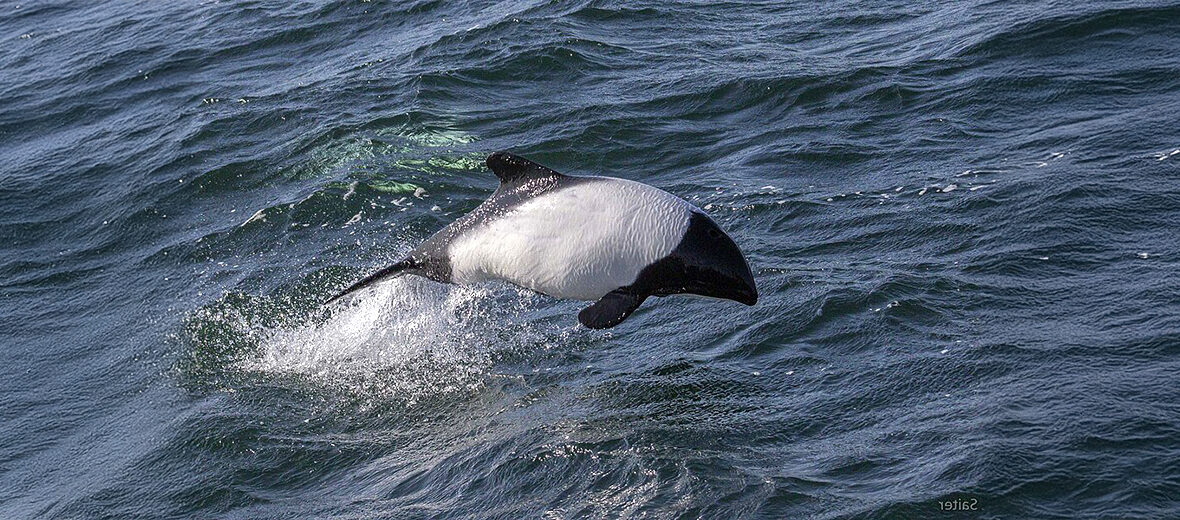
The Commerson’s dolphin, aka jacobita, skunk dolphin, piebald dolphin, panda dolphin, or tonina overa, is a small species of dolphin that can be found at the southern tip of South America and the French Southern Territories. These dolphins face the threats of overfishing and over harvesting, yet they are considered abundant enough to be listed as Least Concern by the IUCN. Their population trend is unknown though.
First the Stats…
Scientific name: Cephalorhynchus commersonii
Weight: Up to 189.60 lbs.
Length: Up to 5.11 feet
Lifespan: Up to 25.8 years
Now on to the Facts!
1.) There are 2 disjunct subspecies of these dolphins that are found in geographically disparate areas separated by 5,300 miles. It is unknown why they are distributed so far apart.
2.) Being very active, they are often seen leaping from the water and swimming rapidly.
3.) They are also known to bow-ride and swim behind fast-moving boats.
4.) Swimming upside-down is common for these dolphins and is thought to improve prey visibility.
5.) Commerson’s dolphins prey on a variety of pelagic (open sea) fish, squid, and crustaceans.
But wait, there’s more on the Commerson’s dolphin!
6.) It has been documented that some individuals have even entered the Santa Cruz River to forage there during low tide.
7.) Females undergo up to a 12 month gestation (pregnancy) that can yield a single calf.
Did you know…?
Like other toothed whales and dolphins, these critters use echolocation to aid in finding food and to assist in navigation.
8.) Sadly, these dolphins are sometimes harpooned and used for bait for other fish.
9.) They also get caught in purse seine nets and gill nets while looking for food.
10.) This species of dolphin has been unfortunately presented in public aquariums.
Now a Short Commerson’s Dolphin Video!
Be sure to share & comment below! Also, check out the Critter Science YouTube channel. Videos added regularly!

Want to suggest a critter for me to write about? Let me know here.
Some source material acquired from: Wikipedia & IUCN
Photo credit: Sebastián Saiter V.



